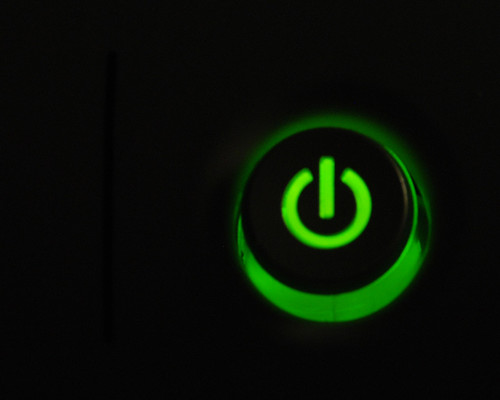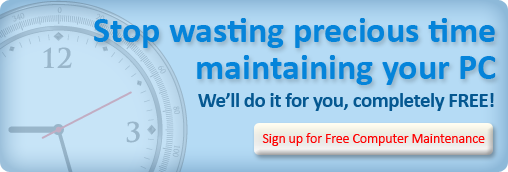 Not everyone has the time or patience to perform computer maintenance which is why Free Computer Maintenance offers a free and easy to use PC optimizer that takes care of maintenance tasks.
Not everyone has the time or patience to perform computer maintenance which is why Free Computer Maintenance offers a free and easy to use PC optimizer that takes care of maintenance tasks.
The main culprit for a slow computer in general as well as a slow computer start-up are the programs assigned to launch along with the required Windows operating system programs and applications. Often these programs are not only rarely used but also use a lot RAM, or system memory. As your computer boots up it attempts to delegate which programs receive start-up priority performance lowers due to low memory being available. Uninstalling programs as a part of free computer maintenance is an easy way to help boost your computer’s performance and optimize your Windows operating system.
To understand why your computer has a slow start-up we must first understand the digital mechanics of a computer. Much like a car’s MPGs lower as the car ages, a computer’s performance can also be affected with age and use. A slow computer’s inception is usually caused by an ineffective system of file management. Information is stored in units called bits, bytes and megabytes that spans your entire hard drive. That’s a complex way of saying how the files are stored and organized on your computer’s hard drive. A hard drive stores and locates information at blazing speeds but an ultra-fast hard drive is no match for information bloat. Thousands of music files, photos and videos can be scattered in many different places on your computer’s hard drive even if they appear to be right next to each other in your folder or graphical interface. Without free computer maintenance these files will remain disorganized on your computer leading to more lag time as your computer searches for your requested. There are multiple ways of increasing your hard drive’s performance. Microsoft Windows operating systems come equip with applications like Disk Defragmenter (which reorganized files on your hard drive for optimal performance) and Disk Cleanup (which deletes unnecessary files that accumulate over time on your hard drive) which is a part of Free Computer Maintenance. The steps below will make your computer faster by uninstalling programs your deem unnecessary.
How To Uninstall Programs and Applications in Windows
- On the Start menu, click Control Panel, and then under Programs, do the following:
- Windows 7 and Windows Vista users: Click Uninstall a Program.
- Windows XP users: Click Add or Remove Programs.
- It may take a few seconds for this page to open, but when it appears, you’ll see a long alphabetical list of installed programs.
- When you see the name of a program you no longer want on your hard disk, click it, and then do the following:
- Windows 7 and Windows Vista users: Click Uninstall.
- Windows XP users: Click the tab to the right of the program, which says Remove or Change/Remove.
- Follow the prompts. A progress bar shows you how long it will take to safely remove the program. When it’s finished, you will see the list again.
Go through the list, but leave those programs that you are unsure of. And don’t remove a program group if you use one of the programs. For example, if you use Microsoft Word, so don’t uninstall Microsoft Office because Word is part of it.
When you uninstall a program, you may also get a message that says that uninstalling the program may remove a file that is shared by another program. To be safe, keep these suggested files on your PC (they shouldn’t take up much room on your hard disk, anyway).
When you uninstall a game, the program may ask if you want to keep saved game files (that is, a bookmark of your progress). If you think that you will reinstall and play this game again, you can choose to keep these files.
